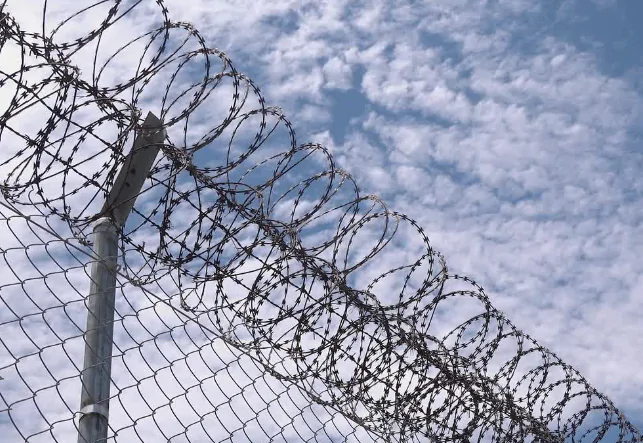ታኅሣ . 26, 2024 08:04 Back to list
Innovative Solutions for Effective Temporary Fencing in Construction and Event Management
The Importance of Temporary Fencing Ensuring Safety and Security
Temporary fencing is an essential component in many industries and situations, providing a practical solution for creating boundaries, ensuring safety, and maintaining security. Whether it’s for construction sites, special events, or crowd control, temporary fencing plays a vital role in safeguarding people and property. This article explores the benefits, applications, and considerations surrounding temporary fencing.
What is Temporary Fencing?
Temporary fencing refers to portable barriers that are set up for a limited time to define an area, restrict access, or provide safety. These fences are typically made from lightweight materials such as metal or plastic and can be easily assembled and disassembled. Their versatility and ease of use make them an attractive option for various applications.
Key Benefits of Temporary Fencing
1. Security One of the primary reasons for installing temporary fencing is to enhance security. This is particularly crucial on construction sites where expensive equipment and materials are present. A well-erected fence serves as a deterrent to theft and vandalism, helping to protect valuable assets.
2. Safety In areas where construction or events are taking place, temporary fencing helps to keep the public away from potential hazards. It protects passersby from accidents, ensuring that they do not inadvertently enter dangerous zones. For example, when a building is being renovated, a temporary fence can prevent individuals from coming too close to scaffolding or equipment.
3. Crowd Control During large gatherings or festivals, managing crowds can be a challenging task. Temporary fencing provides designated areas for entry, exit, and queuing, ensuring that crowds are controlled and managed effectively. This not only enhances the overall experience for attendees but also minimizes the risk of accidents and injuries.
4. Cost-Effective For many businesses and event organizers, renting temporary fencing is a cost-effective solution compared to permanent installations. This affordability makes it accessible for short-term needs, helping organizations to allocate their resources more efficiently.
5. Quick Installation and Removal Another significant advantage of temporary fencing is its ease of installation. Unlike permanent fencing, which can require extensive groundwork and time, temporary fencing can be set up quickly, often within a few hours. This flexibility is critical in situations where time is of the essence.
Applications of Temporary Fencing
temporary fencing

Temporary fencing can be utilized in diverse settings, including
- Construction Sites As mentioned earlier, these are perhaps the most common locations for temporary fencing, where site boundaries need to be clearly marked. - Events and Festivals Concerts, fairs, and sporting events often require temporary barriers to establish perimeters, manage access points, and create safe spaces for attendees. - Emergency Situations In the aftermath of disasters or accidents, temporary fencing can help secure areas undergoing repairs and prevent unauthorized access.
- Residential Projects Homeowners may use temporary fencing during renovations to keep children and pets away from hazardous areas.
Considerations When Choosing Temporary Fencing
When selecting temporary fencing for a project or event, there are several factors to consider
1. Material The material of the fencing should match the specific needs of the site. For high-security areas, stronger materials such as chain link may be more suitable, while lighter plastic options might suffice for low-risk environments.
2. Height and Visibility Depending on the purpose, the height of the fencing can vary. Additionally, ensuring that the fencing is visible (for instance, through the use of bright colors or warning signage) is essential to communicate restrictions effectively.
3. Local Regulations Before installation, it’s vital to check with local authorities regarding zoning laws and regulations surrounding temporary structures. Compliance ensures that the fencing is legally erected and avoids any fines.
4. Weather Considerations Depending on the location and season, it’s important to select fencing that can withstand local weather conditions, such as high winds or heavy rains.
In conclusion, temporary fencing is a practical solution that enhances safety, security, and organization across various applications. By carefully considering the specific needs and regulatory requirements, individuals and organizations can effectively implement temporary fencing to create secure environments, ensuring peaceful and safe experiences for all involved.
-
Hop Dipped Galvanized / PVC Coated Temporary Fence-Anping County Xingzhi Metal Wiremesh Products Co., Ltd.|Durable Temporary Fencing, Corrosion Resistant Solutions
NewsAug.03,2025
-
Hop Dipped Galvanized / PVC Coated Temporary Fence - Anping County Xingzhi Metal Wiremesh Products Co., Ltd|Durable Temporary Fencing Solutions&Customizable Security Systems
NewsAug.03,2025
-
Hop Dipped Galvanized / PVC Coated Temporary Fence - Anping County Xingzhi Metal Wiremesh Products Co., Ltd.|Corrosion Resistant&Modular Design
NewsAug.03,2025
-
Galvanized Iron Wire Anti Mosquito Window Screen Net | Durable
NewsAug.03,2025
-
Hop Dipped Galvanized/PVC Coated Temporary Fence-Anping County Xingzhi Metal Wiremesh Products Co.,Ltd|Durable Temporary Fencing Solutions&Customizable Construction Site Security
NewsAug.02,2025
-
Hop Dipped Galvanized/PVC Coated Temporary Fence - Anping County Xingzhi Metal Wiremesh Products Co., Ltd.
NewsAug.02,2025



